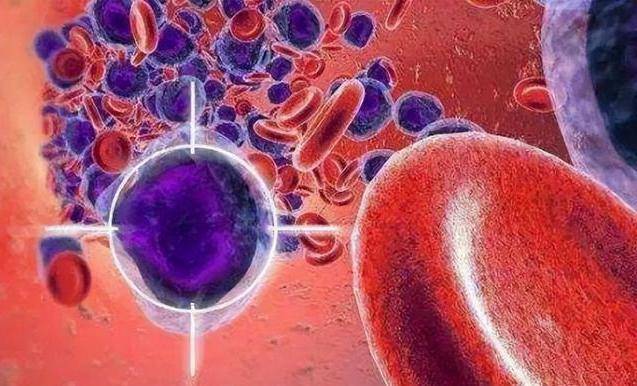Introduction: In the environment we are in, there are many bacteria and viruses that are invisible to the naked eye. It is these tiny microorganisms that gradually affect our health, leading to the occurrence of various adverse symptoms.
In our daily living environment, there are various pathogens present. Throughout one’s life, an individual may be infected by over 150 different pathogens.
However, under normal circumstances and with a functioning immune system, these pathogens do not cause diseases and may even be beneficial to the body.
For pathogens with low pathogenicity, they only cause infections when present in large quantities. However, for highly pathogenic pathogens such as plague, smallpox, and rabies, they can cause disease in humans after mild infections.
As the human body lacks natural resistance, injecting vaccines through preventive injections helps the body develop active immunity against various highly infectious pathogens, effectively preventing the occurrence of many diseases.
There are also sexually transmitted diseases in daily life. It is important to know about them and gain more understanding to prioritize health and not indulge in risky behavior.
Do you know about the 5 sexually transmitted diseases? Let’s find out in advance.
Genital warts
The most common HPV strains that cause genital warts are HPV 6 and 11. HPV thrives and reproduces in warm and moist conditions in the human body, making the external genitalia the most prone to infections.
Genital warts are infectious diseases caused by the Human Papillomavirus (HPV) and are a type of sexually transmitted disease. They are also known as genital warts, being one of the most common global STDs.
The primary mode of transmission is through sexual contact, although a few patients may get infected through other means. The main sources of infection are individuals with genital warts and those carrying the HPV virus.
HIV/AIDS
HIV/AIDS is a chronic infectious disease caused by the Human Immunodeficiency Virus (HIV). The three main transmission routes for HIV include blood transmission, sexual contact transmission, and mother-to-child transmission.
Once the virus enters the body, it mainly targets the immune system by attacking CD4-positive T-lymphocytes, macrophages, and dendritic cells, leading to a decrease in the count of CD4-positive T-lymphocytes.
CD4-positive T-lymphocytes are crucial immune cells, and their depletion can weaken the immune function and make the body susceptible to opportunistic infections and tumors.
According to the Chinese Center for Disease Control and Prevention’s Weekly Report, by the end of 2020, there were a total of 1.053 million reported cases of HIV/AIDS in China, with 351,000 deaths reported.
Gonorrhea
Gonorrhea is a purulent infection of the genitourinary tract caused by Neisseria gonorrhoeae. It is classified as a Class B infectious disease and is one of the sexually transmitted diseases, with 95% of cases resulting from sexual contact.
In female gonorrhea patients, the gonococcus often remains dormant in the cervix, serving as a primary reservoir for infection. Infants can get infected during childbirth, leading to neonatal gonococcal conjunctivitis and keratitis.
The incubation period for gonorrhea is typically 2 to 10 days, with symptoms appearing around 3 to 5 days on average. In males, the acute phase is characterized by notable urethritis symptoms, including frequent urination, urgency, dysuria, and purulent discharge, which usually resolves within a month without treatment.
Syphilis
Syphilis is a chronic infectious disease caused by the spirochete bacterium Treponema pallidum. Syphilis patients are the only source of transmission.
Common transmission routes include sexual contact, with most infections occurring through sexual transmission via minor skin/mucous membrane abrasions. Vertical transmission can happen when pregnant women pass the infection to their fetuses through the placenta.
A small number of cases can occur through iatrogenic means, such as kissing, shaking hands, breastfeeding, or contact with contaminated clothing or objects.
HPV
HPV stands for the Human Papillomavirus, a contagious virus with multiple transmission routes, primarily through sexual contact. Increased risk of HPV infection is associated with frequent changes in sexual partners or promiscuous sexual behavior.
Other modes of transmission include close contact, indirect transmission, and vertical transmission. HPV infections can occur in various settings, such as hotels, public baths, or swimming pools.
When a woman tests positive for HPV infection, it is essential to boost her immune system and consider antiviral HPV treatment if necessary.
Persistent infection with high-risk HPV strains can lead to cervical lesions or cervical cancer, while low-risk HPV infections may result in conditions like genital warts.
How to prevent sexually transmitted diseases?
Since sexual behavior is the main route of STD transmission, practicing abstinence, avoiding premarital and extramarital sex, and maintaining monogamous relationships can significantly reduce the risk of contracting STDs.
Diseases like HIV/AIDS and syphilis can also spread through blood transmission. Therefore, caution is advised when receiving blood transfusions and blood products.
Personal items often overlooked, such as toothbrushes, razors, and towels, should be used exclusively to prevent potential transmission.


